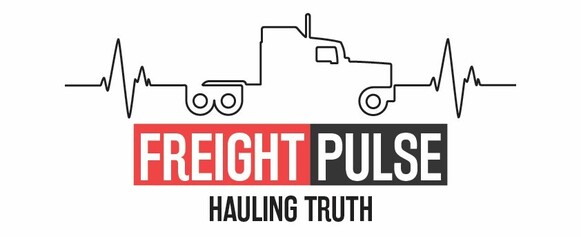Key Body Played Critical Role in Advancing Hair Sample Testing Rules and Federal Drug Testing Oversight. In a significant move affecting the federal government’s approach to workplace drug testing, the Trump administration has dissolved the Drug Testing Advisory Board (DTAB) a committee that had operated since 1988 under the Substance Abuse and Mental Health Services Administration (SAMHSA), part of the Department of Health and Human Services.
The DTAB had been instrumental in shaping scientific and technical standards for federal drug testing programs, including protocols for laboratories and recommendations for specimen types, such as the potential adoption of hair testing for commercial drivers. Although the board held no regulatory authority, its expert guidance significantly influenced rulemaking by federal agencies, especially in the Department of Transportation (DOT).
Scientific Oversight and Expert Guidance
Comprised of professionals in medicine, toxicology, law, and industry practice, the DTAB was seen as a critical voice in the complex and evolving field of drug and alcohol testing. Over the past decade, it had overseen the development of a proposed federal rule that would allow motor carriers to use hair samples in place of, or in addition to, urine for drug testing a change sought by many in the trucking industry due to its longer detection window and tamper-resistance.
Steve Keppler, co-director at Scopelitis Transportation Consulting and a former executive director of the Commercial Vehicle Safety Alliance, noted the board’s influence:
“Of many advisory committees, their input was likely more useful than some others… because of the membership being doctors, lawyers and practitioners, they provided specialized expertise from direct experience in the field.”
However, he also acknowledged that while trucking industry stakeholders didn’t always align with DTAB findings, its guidance carried more weight than that of typical advisory panels something that could be a source of frustration among those looking for faster policy changes.
Hair Testing: A Decade in the Making
The development of hair testing regulations has been a slow and scientifically contentious process. Hair tests can detect drug use going back as far as 90 days, whereas urine tests typically capture only recent use within a few days. Proponents argue hair testing is harder to cheat and better reflects long-term drug use, making it ideal for safety-sensitive industries like trucking.
Yet concerns about accuracy, particularly regarding racial bias (darker hair may retain drug metabolites more readily), environmental contamination, and the consistency of test results across labs, have slowed adoption at the federal level. These are the very issues DTAB was helping to navigate.
The White House Office of Management and Budget (OMB) is still reviewing a proposed rule on hair testing, but with DTAB disbanded, it remains unclear how scientific input will continue to inform this process.

Leadership Vacuum and Staff Losses
DTAB’s termination came shortly after the early retirement of its longtime chair, Ron Flegel, who cited increasing pressure and a lack of clarity about the board’s future. In an internal email, Flegel wrote:
“Given the anticipated levels of stress that will come by staying, both physically and mentally, and tough decisions regarding the program and staff, I believe this to be the right decision for myself.”
A SAMHSA source, speaking anonymously, expressed concern over the board’s dissolution, noting that the agency has been experiencing staffing losses due to administrative cutbacks under the Trump administration.
“It will be very difficult to communicate to the public without the DTAB, and a lack of personnel will have an impact on how quickly items proceed,” the source said.
Implications for Federal Drug Testing Policy
While SAMHSA clarified that the DTAB was an advisory body whose members served voluntarily, the decision to dissolve the board stands out because it had continued uninterrupted through six prior administrations Republican and Democratic alike.
A SAMHSA spokesperson told Transport Topics:
“The voluntary service of the council’s members was terminated, as is common practice for a new administration.”
However, many experts argue that the board’s role was too specialized and too important to be treated as just another advisory group.
Brenna Lyles, senior director of safety policy for the American Trucking Associations (ATA), emphasized that while the immediate function of the DOT’s drug testing program remains intact, the long-term impact of DTAB’s absence could be significant:
“The DTAB was designed to issue scientific and technical guidance on drug-testing standards… Over the longer term, DTAB’s termination could slow the integration of new scientific findings into federal drug-testing policies and standards.”
Looking Ahead: A Dynamic Landscape
Drug and alcohol testing policy is a rapidly evolving field, influenced by shifting patterns in substance abuse, new synthetic drugs, technological advancements, and increasing calls for equitable and science-based testing. Marijuana legalization in many states, the opioid crisis, and the rise of fentanyl have only heightened the importance of robust and up-to-date testing standards.
As Steve Keppler warned:
“D&A testing is a complicated area of regulation… Not having a sounding board of practitioners will have impacts on real-world application and administration of the rules… This is a space that is dynamic and changes, so in order to be relevant and effective, the government needs to stay informed and on top of the changing environment. Not having the DTAB anymore will impact this capability.”
Without the DTAB, federal agencies may find themselves with fewer tools to navigate this complex terrain, potentially delaying updates to testing methodologies and weakening the scientific rigor behind critical policy decisions.

